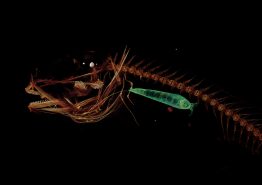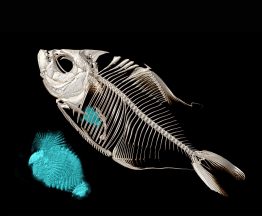The deepest-dwelling fish in the sea just got one more bragging right. The World Register of Marine Species, or WoRMS, has named the Mariana snailfish one of its 10 “remarkable new species” discovered in 2017. The team that discovered and named the small fish that lives at ocean depths of up to 8,000 meters (26,200 feet) includes Mackenzie Gerringer, a postdoctoral researcher at the UW’s Friday Harbor Laboratories.
Read more at UW Today »Friday Harbor Labs’ Megan Dethier receives Seattle Aquarium Conservation Research Award
Each year, the Seattle Aquarium recognizes individuals who are leaders in marine research, especially in the Pacific Northwest. This year that honor goes to Megan Dethier, a longtime researcher at the College of the Environment’s Friday Harbor Laboratories. She was recognized alongside George Willoughby from Friday Habor Labs’ Advancement Board, who received the Scott S. Patrick Award for his volunteer service.
Read more »Scale-eating fish adopt clever parasitic methods to survive
A small group of fishes — possibly the world’s cleverest carnivorous grazers — feeds on the scales of other fish in the tropics. The different species’ approach differs: some ram their blunt noses into the sides of other fish to prey upon sloughed-off scales, while others open their jaws to gargantuan widths to pry scales off with their teeth. A team led by biologists at the University of Washington’s Friday Harbor Laboratories is trying to understand these scale-feeding fish and how this odd diet influences their body evolution and behavior.
Read more at UW Today »Loose skin and slime protect hagfishes from sharks
Researchers from the University of Washington, Chapman University and University of Guelph have published new research showing how hagfishes — an ancient group of eel-like animals found at the bottom of the ocean — survive an initial attack from predators before they release large volumes of slime to defend themselves. Results show that hagfish skin is not puncture resistant; instead, it is both unattached and flaccid, which helps avoid internal damage from penetrating teeth.
Read more at UW Today »Megan Dethier
Read more »





